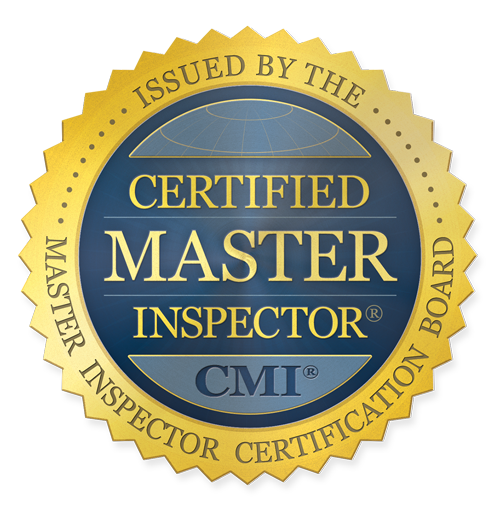Home inspections are designed for specific purposes; two exist almost exclusively to be submitted to home insurance providers.
Save Money On Home Insurance With 4-Point & Wind Mitigation Inspections
Your home insurance carrier has a vested interest in your home’s structural integrity and the functionality of four critical systems. So, whether you’ve just purchased a home or, as time marches on, your homeowners insurance carrier may request inspection reports from a 4-point inspection to evaluate whether the rates you’re paying reflect your house’s condition (or risk).
Here in Florida, home insurance companies are especially interested in wind mitigation features, as these protective measures can greatly improve a house’s ability to weather high winds and peak storm seasons. So, if you recently enhanced your home’s wind mitigation features or are interested in seeing how your home measures up, you can schedule a wind mitigation inspection to help you save money on your policy.
The Basics of a 4-Point Inspection
Four-point inspections are a home insurance industry standard. They mainly determine whether a home is insurable and its overall risk, which in turn determines its premium rates.
Insurance carriers are most concerned about the most expensive home systems to replace – and the ones that generate the most claims. These four critical systems are:
1. The Roof
The roof plays a critical role in protecting a house’s structure, occupants, and interior contents. So, it’s no surprise that your roof’s status is a primary concern for home insurance carriers.
During our inspection, we provide information about:
The roof’s age (Florida insurers typically deny coverage for roofs that are 15 years old or older and hike rates as the roof approaches that date).
- Quality of materials and craftsmanship.
- Any evidence of damage, missing shingles/tiles, potential leaks, etc.
- Maintenance history (or evidence that it hasn’t been maintained).
- Current building code compliance.
- Whether it has adequate wind mitigation features.
- Insulation and duct work (roof inspections include a perusal of the attic space where we can see the underside of the roof/installation quality.
- Insulation quality/quantity (instrumental in whole-home moisture control).
- Etc.
While in the attic, we also examine the HVAC ducts, which brings us to #2 on the list.
2. The Heating, Ventilation, & Air Conditioning (HVAC) System
HVAC systems require annual maintenance, which is essential to optimizing the system’s efficiency and longevity. According to the Florida PACE Funding Agency, replacing a broken or malfunctioning HVAC system here in Central Florida costs between $3800 and $7900 dollars. However, larger systems or higher-end systems can cost as much as $12,000.
So, insurance companies want to know the status of the existing HVAC system, the condition of additional components (like a fireplace, boiler, etc.), whether the systems have been maintained according to the manufacturer’s instructions, the status of the ductwork, and so on before finalizing your policy.
3. The Plumbing System
Plumbing system issues are also expensive, especially because smaller, latent leaks underneath sinks or in interior wall spaces can cause tremendous damage before they’re detected.
When we inspect the plumbing components, we’ll look for:
- The materials and their status (older homes often have galvanized steel or cast iron, which may already be damaged or leaking).
- Water heater (How old is it? Any sign of leaks?).
- Whether all the faucets and drains work and drain properly.
Existing plumbing issues should be repaired before or just after the sale and may warrant further inspection to determine whether any damage (mold, mildew, rot, etc.) has occurred in or around the leak.
4. A Close Look at The Electrical System
Outdated electrical panels and faulty wires are a leading cause of home fires, so insurance carriers want to know if your home’s electrical system puts you at risk.
Our increasing use of screens and other tech innovations demands more electrical power than ever, so homes 15 years or older often have outdated or overloaded panels. The same might be true of the electrical wiring if it hasn’t been brought up to code.
We’ll also inspect:
- Whether the size of the system matches the home’s demand.
- Quality of wiring and installation.
- Any overt issues or problems with outlets, electrical fixtures
- And so on.
The results from a passing 4-Point inspection can be sent to your insurance carrier and may result in insurance premium savings. Otherwise, red flags serve as a guide, letting you know what needs to be repaired or amended.
Wind Mitigation Inspection Basics
A wind mitigation inspection is another way to help you gain valuable insurance credits. These specialty inspections identify the features you have in place to optimize the home’s safety during a storm.
This includes things like:
- Proper attachments for the roof, roof-to-wall, and wall-to-foundation.
- Tie-downs for manufactured homes.
- Quality and condition of the water barriers.
- Roof slope
- Reinforcement for gables.
- Hurricane-grade windows, exterior doors, garage doors, etc.
- Clear and unobstructed soffit vents.
- Landscape maintenance and security measures that minimize the risk of flying objects.
If you have these and other wind mitigation features in place, our report may help you save on insurance costs.
Schedule Home Insurance-Friendly Inspections With SIP
Super Inspection Pros (SIP) guarantees a fast turnaround on 4-Point and Wind Mitigation Inspections, giving you the information insurance companies need to review your policy premiums. Contact us to book an inspection today.

